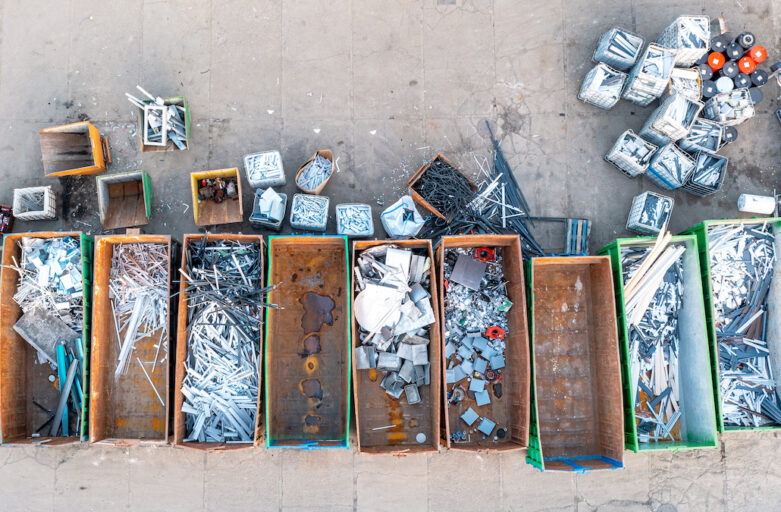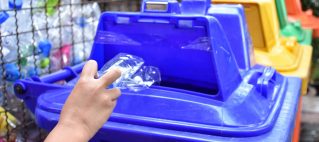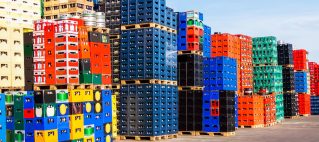Hazardous waste disposal is a critical aspect of environmental responsibility and personal safety. In British Columbia (BC), where environmental consciousness is a way of life, it’s essential to understand how to safely dispose of hazardous materials. This article will guide you through the process of responsibly managing household chemicals, electronics, and other potentially harmful waste products in BC.
Section 1: Understanding Hazardous Waste
Hazardous waste encompasses a wide range of materials that, if improperly disposed of, can pose significant risks to both the environment and human health. Common examples of hazardous waste found in households include:
- Household Chemicals: These can include pesticides, cleaning products, solvents, and paints.
- Electronics: Old computers, TVs, and batteries often contain toxic components.
- Batteries: Both rechargeable and single-use batteries contain hazardous materials.
- Paint and Oil: Used paints and oils can be harmful if not disposed of correctly.
Improper disposal of these materials can contaminate soil and water, harm wildlife, and endanger human health.
Section 2: British Columbia’s Regulations and Guidelines
To ensure the safe handling and disposal of hazardous waste, British Columbia has established strict regulations and guidelines. These regulations are designed to protect the environment and public health. You can find detailed information about these regulations on the British Columbia Ministry of Environment and Climate Change Strategy website.
Section 3: Household Chemical Disposal
Identifying Hazardous Household Chemicals
Identifying hazardous household chemicals is the first step toward safe disposal. Look for labels or symbols indicating warnings or hazardous content on product packaging. Common labels include “Caution,” “Warning,” or “Danger.”
Safe Storage and Transportation
To safely store and transport hazardous household chemicals:
- Keep them in their original containers: This helps prevent accidental mixing.
- Store in a cool, dry place: Keep chemicals out of direct sunlight and away from children and pets.
- Seal containers tightly: Ensure lids are securely closed to prevent leaks.
- Transport securely: Place containers in a sturdy box or tray to prevent spills during transportation.
BC’s Household Hazardous Waste Collection Programs
BC offers Household Hazardous Waste Collection Programs, allowing residents to safely dispose of hazardous household chemicals. You can find a collection site near you by visiting the Recycling Council of British Columbia’s website.
Section 4: Electronics Recycling
The Importance of Electronics Recycling
Electronic waste (e-waste) contains hazardous materials like lead, mercury, and cadmium. Recycling electronics is crucial to prevent these toxins from leaching into the environment.
The Electronic Products Recycling Association (EPRA)
BC is part of the Electronic Products Recycling Association (EPRA) program. EPRA-authorized collection sites accept various electronic devices, including computers, TVs, and more. Visit the EPRA website to find a drop-off location near you.
Section 5: Battery Disposal
The Environmental Impact of Batteries
Batteries, whether rechargeable or single-use, contain hazardous substances such as lead and cadmium. Proper disposal is essential to prevent soil and water contamination.
Battery Recycling
To recycle batteries in BC, visit a drop-off location. Many retailers and recycling centers participate in battery recycling programs. Be sure to follow any special instructions provided for battery disposal.
Section 6: Paint and Oil Disposal
Safely Disposing of Used Paints and Oils
Used paints and oils can be harmful if not handled correctly. To dispose of them responsibly:
- Use it up: Try to use up leftover paint or oil before disposal.
- Donate: Offer unused paint to local charities or community projects.
- Recycle: Check if your area has paint stewardship programs that recycle paint and oil products.
Section 7: Medication Disposal
The Importance of Medication Disposal
Proper disposal of medications is crucial to prevent accidental ingestion, misuse, and environmental contamination.
Returning Medications to Pharmacies
Many pharmacies in BC participate in medication take-back programs. Return unused or expired medications to your local pharmacy for safe disposal.
Section 8: Tips for Safe Hazardous Waste Disposal at Home
Here are some general tips for safely managing hazardous materials in your home:
- Read labels: Always read and follow disposal instructions on product labels.
- Educate yourself: Stay informed about local disposal options and regulations.
- Teach your family: Educate your family members about the importance of responsible disposal.
Conclusion
Proper hazardous waste disposal in British Columbia is a shared responsibility that safeguards our environment and health. By understanding the regulations, identifying hazardous materials, and utilizing disposal programs, we can all contribute to a safer and cleaner BC. Be proactive in your efforts to dispose of hazardous waste responsibly, and encourage others to do the same. Together, we can protect our beautiful province for generations to come.
Additional Resources
For more information on hazardous waste disposal in BC, visit the following resources:
- British Columbia Ministry of Environment and Climate Change Strategy
- Recycling Council of British Columbia
- Electronic Products Recycling Association (EPRA)
Call to Action
Share your experiences and tips on responsible hazardous waste disposal in the comments section below. Let’s work together to promote a safer and cleaner environment in BC. Don’t forget to subscribe to our blog for more informative content on environmental sustainability and responsible waste management. “`
This Markdown outline provides a detailed guide to safely disposing of hazardous materials in British Columbia, with links to relevant resources and a call to action for reader engagement.



